Ominous music, reminiscent of a horror movie, plays while a stranded priest waits alone in a dusty landscape. A lone horseman rides up, a scene out of a classic western. But the priest is a drunk and a thief who tries robbing his savior; the hero is actually a killer, though not, he insists while taking the priest’s bullets and water, a thief. Cue the credit sequence, a full-blown homage to the spaghetti western, A Fistful of Dollars.
In the Valley of Violence, directed by Ti West, packs a lot into its opening moments. It also speaks to the state of westerns today. Despite occasional rumors of its demise – and two decades where memorable entries were the exception – the western is now surprisingly vibrant, thanks to a flexibility that allows movies and TV series to celebrate the genre’s traditions, deconstruct its conventions or do both.
“The western has always been the American epic,” says Robert Thompson, director of Syracuse University’s Bleier Center for Television & Popular Culture. “It’s exciting and violent and huge. We don’t have a single text like The Iliad or The Odyssey but the western is our story.”
Westerns never died off but few were made from 1980 to 2003. They returned with a vengeance after 9/11 and the invasion of Iraq. “It was a time that sent people into shock and America was longing for a way to figure out what went wrong, who we are, what are values are and where we go in future,” says Richard Aquila, author of Wanted Dead or Alive: The American West in Popular Culture.
“The story and the archetypes in westerns may be simple, but that allows you to use subtext to tie things in to what is happening now,” says West, whose previous credits were mainly within the horror genre. The townsfolk in his movie have become violent and desperate since the mine closed and jobs vanished, which he compares to modern Detroit.
Taylor Sheridan, who wrote the screenplay for this year’s revelatory modern western, Hell or High Water, wanted to meld the heist, buddy and road movies into the western “and then turn all the genres on their ear”.
His film, the year’s highest-grossing indie, stars Chris Pine and Ben Foster as brothers robbing the banks that seduced their late mother into a predatory loan, and Jeff Bridges as the ageing Texas Ranger who hunts them. Bridges was drawn to it by “the moral ambiguities” of all the characters and the story.
“The movie has us re-examining the self-evident truths of America,” Thompson says, tackling subjects like poverty’s multi-generational stranglehold, the lingering impact of domestic violence; casual racism and even the pros and cons of a state loaded with guns. But it does so amid a landscape of bank robberies and getaway cars, stakeouts and shootouts.
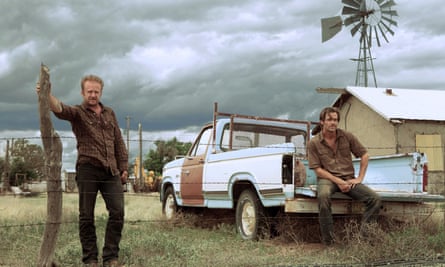
“The holy grail is putting ideas into a movie that also entertains,” Sheridan says, who loathes movies that preach. “The western allows you to put sugar on the capsule to make the ideas go down easy.”
The western has been a movie staple since the pioneering 1903 film, The Great Train Robbery. It became the dominant genre, especially after the second world war, creating an image – John Wayne – of rugged American self-reliance and manliness. From 1910 through 1960, approximately a quarter of all films featured hats and horses and the television landscape was similarly populated with cowboys.
The western will never return to those days but The Magnificent Seven remake reached number one at the box office last month and the past two years have also pushed the boundaries of the western with The Revenant and The Hateful Eight as well as smaller films like Bone Tomahawk and Slow West, HBO’s lavish and twisted Westworld blends genres while David Milch says he’s three months from shooting his long-awaited conclusion to Deadwood (“though I may be kidding myself,” he adds), and the network is reportedly developing another western with Deepwater Horizon director Peter Berg; meanwhile, AMC has a sprawling saga, The Son, coming in 2017.
“We’re reaching some fever pitch right now, looking at the idea of autonomous individualism and the chaos out there,” says James Ransone, the Valley of Violence villain, pointing out that new technology like railroads and improved weaponry were essential to our manifest destiny. Today’s new technological frontiers have film-makers and audiences yearning for simpler times. “So we’re telling stories that make sense of that environment as tumbleweeds of tweets roll past,” he adds.
The classic westerns “celebrated American exceptionalism”, Aquila says.
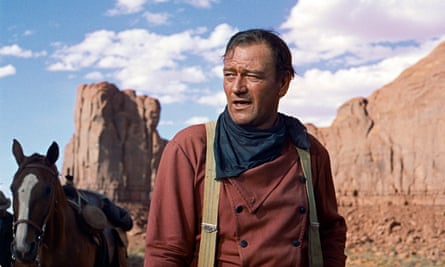
While most were “white hats and black hats, good versus evil”, Stacy Keach recalls, the best were more nuanced. Sure, the good guys always won but in John Ford’s The Searchers, Wayne’s virulent racism makes him more an anti-hero and Jeff Bridges says, “there were dilemmas and moral complexities in movies like High Noon”, a parable about McCarthyism.
Radical change arrived in the 1960s with a young generation opposing the Vietnam war and supporting the civil rights and women’s movements. “Old westerns were like a checklist of what their revolution was against,” Thompson says – macho heroes, “might makes right” and manifest destiny against “savages”.
In a nation divided, John Wayne westerns remained popular but anti-heroes such as Clint Eastwood in Sergio Leone’s legendary spaghetti western trilogy and Paul Newman and Robert Redford as doomed robbers in Butch Cassidy and the Sundance Kid became the cultural touchstones, alongside Sam Peckinpah’s bloody The Wild Bunch, which he said was an allegory for Vietnam, Butch Cassidy was the most successful western ever … until Blazing Saddles, which completely subverted the entire genre. Revisionist westerns took over, led by movies like McCabe & Mrs Miller and Little Big Man.
“The western is flexible, that’s why its alive still,” says Aquila. “It’s like an inkblot test and every generation uses it for its own purposes.”
Doc, a revisionist retelling of the Doc Holliday and Wyatt Earp saga, “tried desperately to avoid any parallel to Gunfight at OK Corral”, the 1957 western that mythologized those historical events, says Keach.
By the late 1970s, production of any westerns was in steep decline. Thompson and Keach say the dusty towns seemed alien to younger viewers, who preferred space, the final frontier, which allowed for western stories and characters – Captain Kirk as the sheriff – in a new setting. “Star Wars is a western in space,” Keach says.
After Heaven’s Gate misfired badly in 1980, the western seemed doomed. America found its rugged heroes in action-adventure films like Raiders of the Lost Ark, Rambo and Die Hard. John McClane’s “Yippee Ki Yay, motherfucker” is that generation’s most memorable cowboy quote. For two decades, westerns were slick Hollywood confections like Young Guns, Tombstone, Maverick and Wyatt Earp or comedies like Three Amigos and City Slickers that satirized overly familiar tropes. There was one glorious span from 1989 to 1992 with four stirring exceptions: the Lonesome Dove miniseries in 1989, followed by the smash hit Dances With Wolves, Thunderheart and Clint Eastwood’s final word on the topic in his classic Unforgiven.

Deadwood paved the way for the new westerns, Thompson says. Milch didn’t set out to create one. “I wanted to tell the story about the moral chaos of a community trying to discover the rules by which to live,” he says. Networks viewed it more as “a cop show relocated to the west with Bullock as the central character, which is not what it was,” he says, in part because of his track record (Hill Street Blues, NYPD Blue) and in part “because the western was in eclipse as a genre so that was a more comfortable way to think about it”.
Aquila says the split in the nation’s mood then allowed for films that harkened back to the days when justice – alongside vengeance – was served (Open Range, Appaloosa) but that the tenor during the Bush years was generally darker. The ending of the scintillating remake of 3:10 to Yuma was deadlier than the original, The Assassination of Jesse James By the Coward Robert Ford was a mournful study of a society obsessed with myth and celebrity, and There Will Be Blood was about greed, oil and violence (or the Republican party under Dick Cheney).
The Coen brothers’ riveting No Country for Old Men was “a morality play with an ending that shows good doesn’t necessarily triumph over evil,” Aquila says, a good fit for a country frightened of terrorists and bogged down in a misguided war. The Coens returned to the western under a new president three years later with a more hopeful film, their True Grit remake. “That shows how we use the western myths,” he says, adding that the next great western of the Obama era was Django Unchained, which showed a black man as the gunslinger hero. (This year’s box office success of The Revenant and The Magnificent Seven reveals a desire “for a more traditional American spirit” and a tough-guy hero, he says, although our presidential candidates confound every reasonable archetype).
Meanwhile, television produced Justified, Longmire and Hell on Wheels. But the western’s new life derives not just from quintessential American visionaries like Quentin Tarantino and Tommy Lee Jones (2014’s The Homesman) but from foreign-born film-makers from Alejandro González Iñárritu to Kristian Levring (2014’s The Salvation), John Maclean (Slow West) and David Mackenzie (Hell or High Water).
“We don’t get bogged down in what small-town America was like and we can have a slight cynicism and criticism about America and the genre,” says Maclean, whose timely tale is about the rude awakening awaiting a naive immigrant on his journey into the new world. Maclean’s film is lit with a glow, like a fable “to comment on storytelling and the myths of the west”, which he directly punctures with sly humor.
The freshest takes these days find new ways to subvert, escape or toy with the familiar cliches. Westworld is so aware that it is about an artificial landscape its customers know so well that guests choose between white or black hats before venturing into the playground of the wild west. “They are picking up on our traditional notions of the western but then playing with them,” Aquila says, while remaining timely by exploring our anxiety about topics like artificial intelligence.
“This is still our historical epic,” Thompson adds. “The western is going to be around for a long time.”




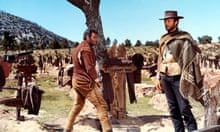
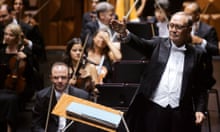
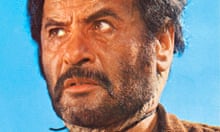

Comments (…)
Sign in or create your Guardian account to join the discussion